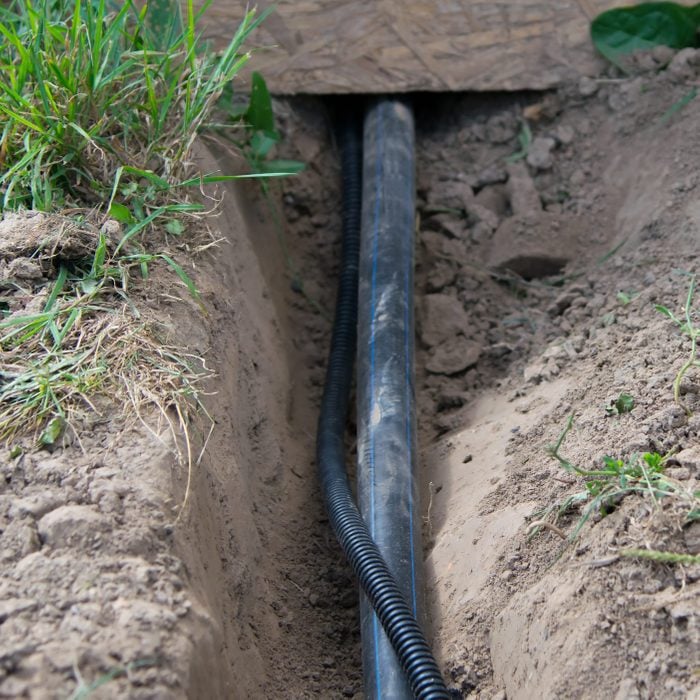
Running electric power to a garage or garden pond? Learn about code requirements, trench depth options, conduit material and types of electrical wire.

KURGU128/GETTY IMAGES
Electrifying a detached garage, tool shed or garden pond is a DIY project that homeowners can absolutely tackle themselves. You just need the right information and guidance.
The National Electrical Code contains basic provisions for allowable wiring methods and materials, the required burial depth of the wiring and other safety considerations to ensure the underground wiring provides safe and reliable service for many years.
There are four common options for running underground electrical wiring through your yard. Your choice primarily depends on the type of soil you have.
If it’s granular and easy to dig, you can save money on electrical materials by digging deep; you may not need to install metal or plastic conduit to protect the buried wiring from physical damage. On the other hand, if the soil is rocky or heavy clay, or you encounter lots of tree roots, you can keep your digging to a minimum and protect the buried wiring in metal or plastic conduit.
Better yet, walk-behind trenching machines that dig down to 24 inches are readily available for rent at many hardware stores, home centers and equipment rental outlets. You can rent a trencher for half a day for less than $100, and about $150 for a full day. Renting a walk-behind cable plow machine is another option.
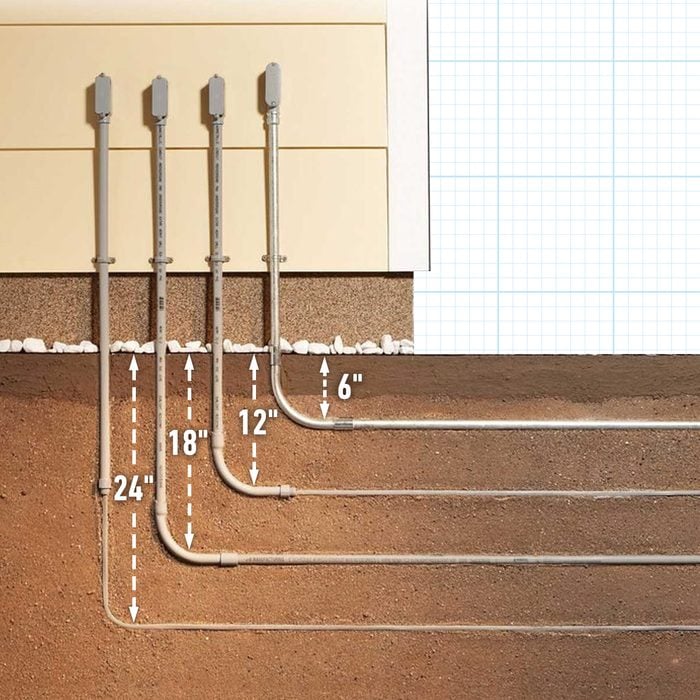 Know About Burying Underground Electrical Cable" />
Know About Burying Underground Electrical Cable" />
Decide how much digging you’re prepared to do and how deep your trench will be. This helps determine the type of wiring and the method you’ll use. Underground cable and wire can be installed at different depths, depending on the type of conduit, wire or cable.
Install galvanized rigid metal electrical conduit with individual insulated wires six inches deep.
Install GFCI-protected direct-buried Type UF cable 12 inches deep.
Install PVC conduit with individual insulated wires 18 inches deep.
Install Type UF cable for the entire run 24 inches deep.
Read on for the specifics about each option.

Before we dig into the specifics, here’s your reminder to follow these essential safety precautions when burying underground cable:
Note: If you need to leave the trench open for an extended period, install barricades around it so it isn’t a safety hazard for people and pets.
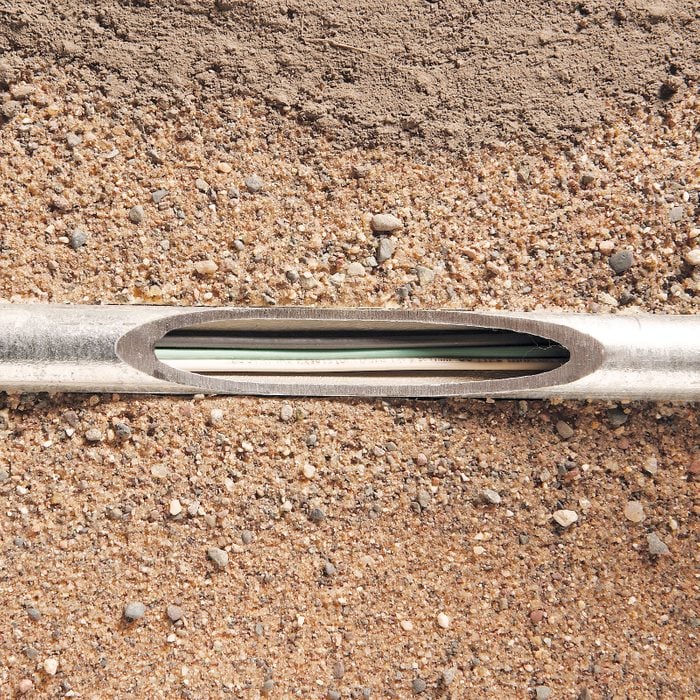
If you have rocky or heavy clay soil or tree roots that makes digging a chore, or you only need to run wire a short distance, go this route. It minimizes digging and provides superior protection for the buried wiring.
Pro tip: The wires need to be rated for use in a wet location. Look for a “W” embossed in the marking on the wire, i.e. THWN-2.
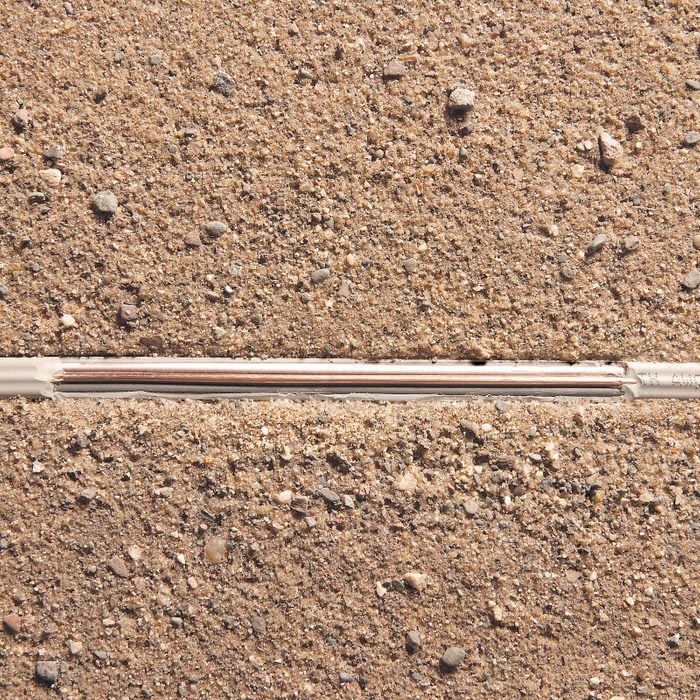
Often the best choice for small backyard electrical projects. It’s only one foot deep, and you don’t have to put the cable inside expensive metal conduit.
Install direct-buried Type UF-B cable, provided the branch circuit is:
Don’t forget you need to install conduit to protect the cable from physical damage where it transitions from aboveground to underground.
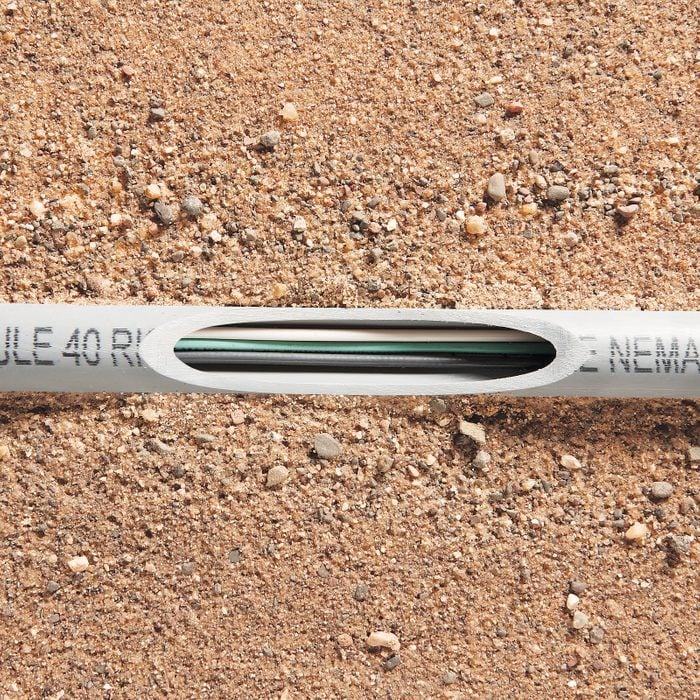
This method lets you run just about any size branch circuit, so it’s good for running electricity to various backyard projects or detached buildings. It also lets you add more wires later.
If you decide in the future to install a switch loop to control the shed lights from inside your house, you can easily pull a couple of extra wires into the PVC conduit.